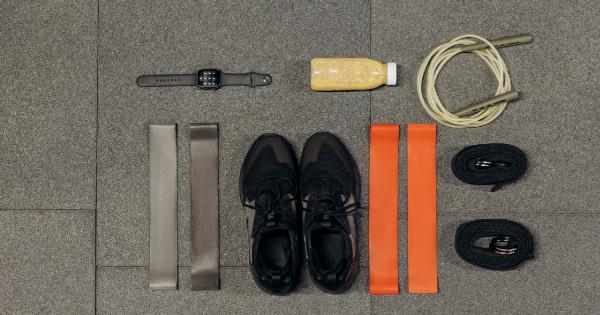As we live in a society that values physical appearance and staying healthy, it’s important to ask ourselves the question, “Am I really in shape?” Being fit not only increases our confidence but also improves our overall health and wellbeing. But how do we determine if we are in shape? Keep reading to discover five ways to know for sure.
1. Body Mass Index (BMI)
BMI is a numerical value of the relationship between height and weight. It indicates if an individual is underweight, normal weight, overweight, or obese.
A BMI below 18.5 indicates underweight, a BMI between 18.5-24.9 indicates normal weight, a BMI between 25.0-29.9 indicates overweight, and a BMI of 30.0 and above indicates obese. While BMI is not a perfect measure of a person’s health, it is an easy and quick way to get an idea of whether or not you are in shape.
2. Waist-to-Hip Ratio
The waist-to-hip ratio (WHR) is a measure of the circumference of the waist to that of the hips. It is another effective way to determine how much fat is around your waist, which is a risk factor for heart disease and other health issues.
To calculate your waist-to-hip ratio, divide your waist circumference by your hip circumference. A ratio above 0.85 in women and above 0.9 in men indicates abdominal obesity, which increases the risk of related health problems.
3. Strength and Endurance
One way to assess your physical fitness is to test your strength and endurance. These tests can include measuring how many push-ups or sit-ups you can do in a given time, how long you can run or jog, and how much weight you can lift.
These metrics indicate the amount of physical activity you can handle and how much your body can endure. A general rule of thumb is that if you can pass the physical tests required of most police and fire departments or the military, then you’re in shape.
4. Resting Heart Rate
Your resting heart rate (RHR) is the number of times your heart beats per minute when you’re at rest. Your RHR is an excellent indicator of your fitness level and cardiovascular health.
Typically, the lower your RHR, the more fit and healthy you are. You can easily track your RHR by checking your pulse in the morning before getting out of bed. A resting heart rate between 60-80 beats per minute is considered to be healthy, while athletes might have a resting heart rate of 40-60 beats per minute.
5. Flexibility
Flexibility refers to your ability to move your joints and muscles through their full range of motion. Being flexible not only helps you avoid injury but also improves your athletic performance.
To assess your flexibility, you can perform simple stretching exercises like touching your toes while standing. If you can touch your toes without bending your knees, you’re considered to be flexible.
Conclusion
In conclusion, the five ways mentioned above can help you determine if you’re in shape. Remember, maintaining a healthy lifestyle is about more than just looking good.
It’s about feeling good, and Being in shape can lead to improved overall health, increased confidence, and a happier life.






























